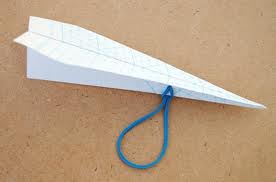One way that we can support a child's imagination is to help them record or otherwise "save" their creative thoughts and ideas.
Writing for our children, writing to our children, and writing about our children (until they can write) encourages the practice of giving ideas a place for safekeeping. When imagination is honored, creativity flourishes.
Creativity manifests itself in extreme, complex, positive, and sometimes negative ways. Children with strong imaginations benefit more from hearing praise such as:
"You have a rich imagination."
"You see the world in exciting ways."
"You think of extraordinary ideas and tell wonderful stories."
"You make boring things seem exciting."
"Thank you for being you... you make being me, all the more pleasurable."
It's important to nurture creativity in ourselves and in our children. For instance, you could ask your son to draw what he thinks his first car will look like or how cars will look in the future. You could ask your daughter to draw images of her imaginary friends or design a clothing line for her pets. In fact, you could ask both of your kids to make a picture book about their imaginary pets or treasures that they think might be hidden under the rainbow.
Providing children opportunities for design and invention, relaxation and channeling imagination with stories and guided imagery, and an opportunity to distinguish between the imaginary and the real world offers children with this extra emotional antennae to be more emotionally endowed, making them more capable of finding creative solutions to life's ordinary - and not so ordinary - challenges.
While many schools and so-called "experts" see such creative endowment as a maladjustment and an interference when it comes to memorizing random pieces of information to produce what society calls a productive, rational life, don't buy into this.
To define creativity is like depicting the magnificence of the Great Pyramids with a set of Tinker Toys. Creativity is the depth and breadth of feeling that brings the nuance of language and meaning to visible life. Projects serve a shrine for lost thoughts and an opportunity to hold onto what we all sense from early on is a piece of our own humanity.
Intensely creative children bear enormous loads of feelings that accumulate from various fears, hopes, and anxieties - concern about death, love, loneliness, deep caring for others, and excruciating self-scrutiny, as well as the exhilaration in joy and affection. When a child is allowed to express their creativity, their radiance lights up the whole house! When they are separated from this outlet, the weight of the world is on their shoulders.
If your kids are showing a range of contradictive reactions, it could be that they simply need a creative tug in an artistic direction that allows them to absorb and respond to the demands of the world. Kids don't have the vocabulary and emotional maturity to describe the complexity of emotions they're feeling, but they do have little hands and little fingers that can express their thoughts for them.
Listen with your own inner creativity and help your child build their self-esteem and sense of self-respect so that they can actualize the intricate wonders they feel and know. It takes some careful listening, a little guidance - and a bit of creativity - so here's a few pics to inspire the power of their possibility (and yours).












































No comments:
Post a Comment